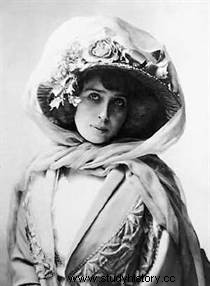 The Roaring Twenties in France refer to the period between the years 1920 and 1929, a decade marked by spectacular economic recovery and great cultural and intellectual effervescence. Thanks to international detente, French industry is establishing itself on European markets and living standards are improving. Paris becomes an active center of literary and artistic creation. Traumatized by the painful experience of the First World War, French society changed its face at the same time as a minority gave birth to the "Roaring Twenties », a period representative of her desire to forget the war and enjoy herself.
The Roaring Twenties in France refer to the period between the years 1920 and 1929, a decade marked by spectacular economic recovery and great cultural and intellectual effervescence. Thanks to international detente, French industry is establishing itself on European markets and living standards are improving. Paris becomes an active center of literary and artistic creation. Traumatized by the painful experience of the First World War, French society changed its face at the same time as a minority gave birth to the "Roaring Twenties », a period representative of her desire to forget the war and enjoy herself.
France at the start of the Roaring Twenties
On July 14, 1919, all of France celebrates the victory, but for what price? In fact, if France is one of the triumphant powers of the war, the victory was a Pyrrhic victory and France must now count its dead. From December 1918, the Under-Secretariat of State for War established the number of French people who had died in combat at 1,385,000. Of the 8,660,000 men mobilized to fight under the French flag, more than 7 million therefore survived. However, many are those who died in the immediate post-war period, as a result of bronchitis, badly treated wounds... The others? War-disabled who remind everyone that victory has a price. De facto , the number of one-legged people is estimated at 25,000 and the number of "broken faces" at 14,000.
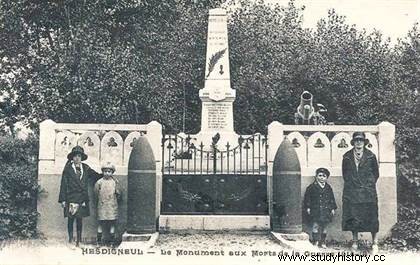 Demographically, France is facing a problem that it did not experience in 1944. Unlike the post second world war, the day after the first war was not accompanied by a birth boom, which destabilized French demography, which already appeared less dynamic than that of several other countries at the end of the 19th century.
Demographically, France is facing a problem that it did not experience in 1944. Unlike the post second world war, the day after the first war was not accompanied by a birth boom, which destabilized French demography, which already appeared less dynamic than that of several other countries at the end of the 19th century.
The birth deficit due to the war is estimated at 1,400,000. This human haemorrhage (the "hollow classes") modifies the profile of the age pyramid and leads to global aging Population. From the beginning of the 1920s, the proportion of sexagenarians already exceeded 13.5%, one of the highest percentages in Europe. The singers launch the famous quip:“Why do we take sixty-year-old politicians? Because those of seventy are dead! »
In legislative matters, a law was passed on July 31, 1920, which penalized abortion. On the other hand, we call for massive immigration. In the 1920s, more than a million immigrants came to France in this way. While immigrants represented 2.7% of the population in 1911, they represented 6.96% of it in 1931. On that date, France became, "compared to the number of its inhabitants, the first country of immigration in the world , ahead of the United States” (Ralph Schor).
In this new wave of saving immigration, it is the Poles who are the most numerous, followed by groups of immigrants from the Mediterranean countries (Portugal, Italy), so that certain towns in the North (Paris, the north and the east of France were geographically the regions with the most immigrants at the time) were inhabited almost exclusively by Poles, like the town of Ostricourt.
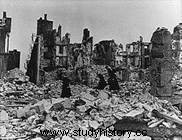 To this terrible human toll is added a sad material toll. The war affected ten French departments, located in the north and east. It is therefore in these that we find the most significant damage. Some towns were completely devastated, such as the town of St Quentin. The damage affecting the architectural buildings is plethoric, symbolized by the destruction of the cathedral of Rouen. 450,000 houses have also been destroyed in whole or in part, while 5,000 km of railway lines are out of order. There is no doubt that France paid a heavy price for this war, in which we hope to see the "der des Ders", a tribute which is a vector of political change.
To this terrible human toll is added a sad material toll. The war affected ten French departments, located in the north and east. It is therefore in these that we find the most significant damage. Some towns were completely devastated, such as the town of St Quentin. The damage affecting the architectural buildings is plethoric, symbolized by the destruction of the cathedral of Rouen. 450,000 houses have also been destroyed in whole or in part, while 5,000 km of railway lines are out of order. There is no doubt that France paid a heavy price for this war, in which we hope to see the "der des Ders", a tribute which is a vector of political change.
From the National Bloc to the National Union
“Few periods in our history have retained such a negative image” (Jean-Jacques Becker and Serge Bernstein) as the Bloc National. Alliance of the center and the right, the National Bloc came to power on November 16, 1919, after the legislative elections, the first elections since the war. A majority of the deputies are veterans, which earned the Chamber the name of "Horizon blue Chamber", in reference to the color of the uniforms of French soldiers. If he could have hoped to run for the presidency, Clémenceau did not obtain it, because of both his anticlericalism and his authoritarianism.
By appointing Paul Deschanel President of the Republic in January 1920, we returned to the tradition that made a point of honor in the discretion of the President. The governments of the National Bloc have as their first priority to settle foreign affairs, that is to say, to settle the peace, even though the war is over. In fact, since the Versailles conference which ended on June 28, 1919, it has been a question of finding solutions to prevent a new war from breaking out.
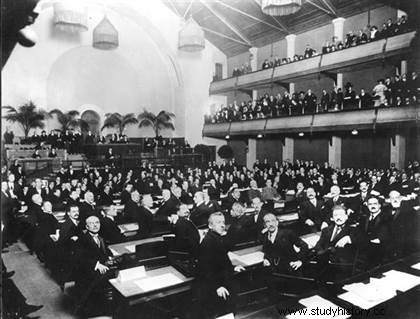 A peaceful organization is set up, the League of Nations (SDN), which shows its limits in without armed forces. The League of Nations is basically only formal, and some leaders could very well disregard formal condemnations not accompanied by armed threats. But no matter, the League of Nations reassures, and that is what matters in the 1920s.
A peaceful organization is set up, the League of Nations (SDN), which shows its limits in without armed forces. The League of Nations is basically only formal, and some leaders could very well disregard formal condemnations not accompanied by armed threats. But no matter, the League of Nations reassures, and that is what matters in the 1920s.
France, for its part, in the words of Finance Minister Lucien Klotz, hopes that “Germany will pay”. More than hoping for it, France demands it. Different commissions and plans aim to fix the amount of war reparations owed by Germany. The latter being largely reluctant to pay, France decided to invade the Ruhr in 1923, an industrial region that would allow it to exploit its coal.
But she had to quickly retract under international protests. Moreover, it is the international powers, in the forefront of which England and the United States, who are blocking French demands because they fear the spread of the revolution (which has already affected Germany and Russia at the end of the war). war) in Germany. The English and American leaders refuse to see, as France would like, Germany on its knees, because a financially and morally beaten country is necessarily more inclined to espouse revolutionary ideas. In short, reparations are therefore constantly reduced, under the impetus of the work of several economists, the most famous of which is John Maynard Keynes (The economic consequences of peace).
Inside, the left was shaken by a division which broke out during the congress held in Tours from December 25 to 30, 1920, the purpose of which was to determine whether the French Section of the Labor International (SFIO) will integrate the Third International. To do this, he must accept 21 conditions. A majority of members (Marcel Cachin, Ludovic Oscar Frossard) accept while a minority refuses (Paul Faure, Léon Blum, who prefers to stay "keep the old house"). At the end of the congress, the French Section of the Communist International was created – ancestor of the PCF – which was made up of those who had accepted alignment with Moscow. The French left therefore appears divided. Similarly, trade unionism saw the emergence of a split within it, with the creation of the CGT-U (1921).
The Cartel of the Lefts
In the legislative elections of 1924, the Cartel des Gauches won, an alliance of radicals and socialists, and thereby sounded the death knell for the Bloc National. The President of the Republic Alexandre Millerand resigns while the Cartel presents Paul Painlevé to succeed him. Finally, it is the president of the Senate Gaston Doumergue who is designated, which provokes the ire of the Cartel which must however put up with it. The policy of the Cartel is characterized by its anticlericalism (France abolishes the French embassy in Rome) and by its struggle to bail out the coffers. Indeed, France is suffering financially and the deficit is very large. This is the main stumbling block facing Edouard Herriot, Chairman of the Board, who, although having tried to reduce this deficit, has not succeeded in this undertaking. On July 21, 1926, the “Cartel Experiment” came to an end.
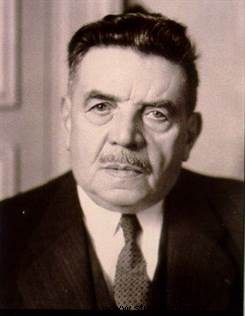 The financiers and the Banque de France got the better of the Cartel. Raymond Poincaré, the father of the Sacred Union of 1914, who had been elected President of the Republic in 1913, became the immediate successor of the Cartel. The period of the Union Nationale, with Poincaré at the helm, appears to be a peak that contrasts with the periods of the Bloc National and the Cartel. France has regained confidence, the economy has improved, and society is opening up to other cultures and gradually forgetting the war.
The financiers and the Banque de France got the better of the Cartel. Raymond Poincaré, the father of the Sacred Union of 1914, who had been elected President of the Republic in 1913, became the immediate successor of the Cartel. The period of the Union Nationale, with Poincaré at the helm, appears to be a peak that contrasts with the periods of the Bloc National and the Cartel. France has regained confidence, the economy has improved, and society is opening up to other cultures and gradually forgetting the war.
The Roaring Twenties:the era of avant-gardes
Demographically undermined, French society is undergoing major transformations. Rural society is gradually losing ground to urban society. In 1931, for the first time in its history, France had more city dwellers than rural people (but what is a city anyway? Is the threshold of 2000 inhabitants correct? What does -he ?). Also the beginnings of a mass culture are emerging little by little and announce the 1930s.
Cultural, artistic and religious life is abundant. The Paris of the Roaring Twenties is the place of choice for surrealism. André Breton, Philippe Soupault, Robert Desnos, Paul Éluard, nourished by Freudianism, give free rein to the expression of their unconscious. They practiced automatic writing, cultivated hypnosis, invented disconcerting objects and launched the "exquisite corpse" game in 1926:the aim was to reconstitute sentences using words entered at random by the participants on small papers.
The musical aesthetic is renewed by Erik Satie. Close to the surrealists, this tongue-in-cheek music is promoted as the “fetish” of the group of Six (Darius Milhaud, the Swiss Arthur Honegger, Francis Poulenc, Georges Auric, Louis Durey and Germaine Taillefer). Of very different temperaments, sponsored by Jean Cocteau, all intend to react against musical impressionism and the influence of Debussy (died in 1918):they practice polytonality and polyrhythm. Satie, a cabaret pianist who died in poverty in 1925, adores rhythmic audacity and hoaxes:he gives his compositions humorous titles (Véritables préludes flasques pour un chien; Trois Morceaux en forme de pear...) and slips into them " the unexpected note” that makes you jump or laugh. Maurice Ravel composed his famous Boléro in 1928. Vincent d'Indy perpetuated the conceptions of César Franck and professed composition until his death in 1931.
The Nouvelle Revue Française around Gide prospered, while war literature (Roland Dorgèles, Henri Barbusse but also Joseph Kessel with L'Equipage) enjoyed great success. The cinema sees, at the end of the period, the emergence of talkies, although it is necessary to wait a few years more than the United States. The French film industry is going through a rather difficult period, although less prosperous than in the Belle Epoque when it was exported to the world and largely dominated it.
A new art of living in France
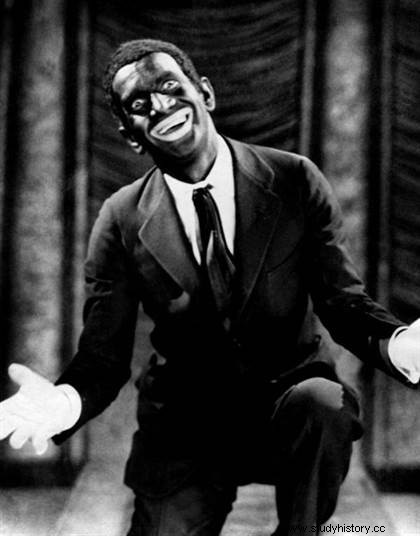 Now she sees competition from Hollyword ever stronger. In addition to having been able to exploit the First World War, Hollywood also benefited from the current of Americanophilia that reached post-war France. It was the emergence of the music hall with Joséphine Baker (which had as its corollary the decline of the café concert emblematic of the Belle Epoque), the adoption of American dances such as the shimmy and especially the Charleston in the mid-1920s, or still the craze for jazz and swing with Louis Armstrong and Benny Goodman. Musically, the stars are called Mistinguett (who performs at the Moulin Rouge), Fréhel, Maurice Chevalier, and are all the more appreciated as they are more and more listened to. In fact, the number of receivers increased significantly and already reached 500,000 units in France in 1925 (600,000 only two years later).
Now she sees competition from Hollyword ever stronger. In addition to having been able to exploit the First World War, Hollywood also benefited from the current of Americanophilia that reached post-war France. It was the emergence of the music hall with Joséphine Baker (which had as its corollary the decline of the café concert emblematic of the Belle Epoque), the adoption of American dances such as the shimmy and especially the Charleston in the mid-1920s, or still the craze for jazz and swing with Louis Armstrong and Benny Goodman. Musically, the stars are called Mistinguett (who performs at the Moulin Rouge), Fréhel, Maurice Chevalier, and are all the more appreciated as they are more and more listened to. In fact, the number of receivers increased significantly and already reached 500,000 units in France in 1925 (600,000 only two years later).
In the world of fashion, it is Coco Chanel who imposes herself as an icon, while the Art Deco style imposes itself on the architectural plan and in design . In the written press, Le Petit Parisien, already the leading daily in 1914, continued to grow, printing more than 1.5 million copies every day. The press continues to diversify, with the creation of sports and music newspapers, etc.
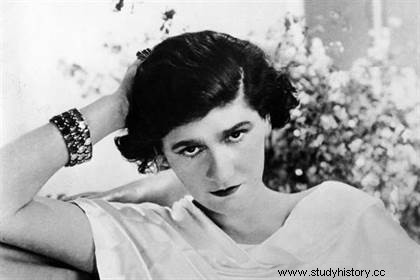 If the 1920s were wrongly called the "Roaring Twenties ", however, it is certain that society is changing. However, the boyish style remains a myth and women are still invited to stay at home (in line with the pronatalist policy of the beginning of the decade, which recalled that the duty of a woman is to give children to France).In this, the post-war period did not in any way modify the situation of women in France and the First World War never emancipated them. while the share of working women in the total population of French women was 37.7% in 1911, this number only rose to 35.5% in 1931.
If the 1920s were wrongly called the "Roaring Twenties ", however, it is certain that society is changing. However, the boyish style remains a myth and women are still invited to stay at home (in line with the pronatalist policy of the beginning of the decade, which recalled that the duty of a woman is to give children to France).In this, the post-war period did not in any way modify the situation of women in France and the First World War never emancipated them. while the share of working women in the total population of French women was 37.7% in 1911, this number only rose to 35.5% in 1931.
The end of the Roaring Twenties
In fact, with the exception of the cultural domain, where they were exceptionally rich, the Roaring Twenties did not profoundly change society from a France to still rigid social structures (for example, women's employment hardly survived demobilization), still rooted in rurality and a taste for savings, victorious in the Great War but obsessed by the fear of a new conflict , and cautiously withdrawn into a visceral pacifism, which was to weaken it in the face of the rise of totalitarian ideologies, in particular Nazi ideology.
The crisis of 1929 brought this second "Belle Epoque" to a sudden halt.
Indicative bibliography
Very eventful period, we could only sketch a very general vision of it and therefore give a necessarily imperfect overview of France during this decade, which is why we refer interested readers to the following books :
- The Roaring Twenties, by Myriam Juan. What do I know, 2021
- MONIER Frédéric, The 1920s, “Contemporary France”, Le livre de poche, Paris, 1999.
- ANNIE GOLDMANN, The Roaring Twenties. Casterman, 1995.
